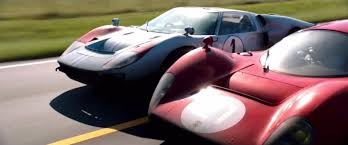Ferrari, the iconic Italian car manufacturer, has long been synonymous with luxury, speed, and engineering excellence. Its presence in popular culture, especially in movies and TV shows, has cemented its status as more than just a car brand; it is a symbol of prestige and performance. This article explores the role Ferrari has played in popular culture, particularly through its appearances in films and television series. We will delve into the reasons behind its prominent presence, its impact on the audience, and how it has influenced the automotive and entertainment industries.
The Allure of Ferrari in Cinema
Ferrari’s association with cinema dates back several decades, with its cars often featured in roles that highlight their performance and design. Filmmakers have used Ferraris to symbolize wealth, success, and adventure, making them a perfect fit for characters who embody these traits.

Symbolism of Luxury and Success
In many films, Ferraris are driven by characters who represent the pinnacle of success. This symbolism is not accidental. The brand’s history of racing success and its high price point make it an ideal marker of affluence. For example, in the movie “Ferris Bueller’s Day Off” (1986), the character Cameron Frye drives his father’s Ferrari 250 GT California, representing a rare, valuable, and cherished possession. This choice of car underscores the wealth of Cameron’s family and sets the stage for the film’s plot.
Association with Adventure and Freedom
Ferraris often appear in scenes that emphasize adventure and freedom, aligning with the car’s high-performance capabilities. In “The Rock” (1996), Nicolas Cage’s character drives a Ferrari F355 Spider in a high-speed chase through the streets of San Francisco. This scene showcases the car’s agility and speed, contributing to the excitement and intensity of the movie.
Television’s Love Affair with Ferrari
Television series have also embraced Ferrari, using its cars to add depth to characters and storylines. Unlike films, TV shows can feature Ferraris over multiple episodes or seasons, allowing for a deeper exploration of their significance.
Enhancing Character Development
In TV series, Ferraris are often used to develop characters and illustrate their personalities. In “Miami Vice” (1984-1989), Detective Sonny Crockett drives a Ferrari Daytona Spyder (and later, a Testarossa), reinforcing his cool, sophisticated, and daring persona. The choice of a Ferrari aligns with Crockett’s image as a stylish and fearless law enforcer.
Creating Iconic Moments
![]()
Television has created some of the most memorable Ferrari moments in popular culture. The opening credits of “Magnum, P.I.” (1980-1988) feature Tom Selleck driving a red Ferrari 308 GTS, which became a signature element of the show. This association with Magnum’s character made the Ferrari 308 GTS a cultural icon, recognizable even to those who might not be familiar with the series.
The Impact of Ferrari’s On-Screen Presence
The frequent appearance of Ferraris in movies and TV shows has had a significant impact on both the brand and the audience. This exposure has contributed to Ferrari’s mystique and desirability, influencing public perception and consumer behavior.
Boosting Brand Prestige
Every on-screen appearance of a Ferrari reinforces its image as a luxury brand. This consistent exposure in high-profile films and TV shows helps maintain Ferrari’s status in the public eye. For instance, the presence of Ferraris in blockbuster films such as the “Transformers” series, where a Ferrari 458 Italia is featured, boosts the brand’s visibility and aligns it with cutting-edge technology and excitement.
Driving Consumer Interest
Ferrari’s portrayal in popular media can drive consumer interest and aspirations. Viewers who see Ferraris in exciting and glamorous contexts may be more inclined to desire ownership or experience driving one. This phenomenon extends to services where enthusiasts can rent Ferrari vehicles, offering a taste of the luxury and performance seen on screen. The opportunity to rent a Ferrari makes the dream accessible to a broader audience, allowing them to experience the thrill of driving a world-renowned car.
The Influence on the Automotive and Entertainment Industries
Ferrari’s involvement in films and TV shows extends beyond brand promotion; it also impacts the automotive and entertainment industries.

Automotive Industry Impact
Ferrari’s frequent appearance in the media highlights its importance in the luxury and performance car markets. Other car manufacturers often look to Ferrari’s marketing strategies and media presence as a benchmark. The collaboration between Ferrari and filmmakers has set a precedent for how cars can be integrated into storytelling, influencing how other brands approach their media partnerships.
Shaping Entertainment Narratives
The integration of Ferraris into movies and TV shows has influenced storytelling techniques. Writers and directors often use Ferraris not just as props, but as integral elements of the narrative. The choice of a Ferrari can set the tone for a scene, convey character traits, and create dramatic tension. This practice has paved the way for other luxury brands to become part of storytelling, enhancing the visual and thematic richness of films and TV shows.
Cultural and Societal Reflections
Ferrari’s role in popular culture also reflects broader cultural and societal trends. The brand’s portrayal in media can offer insights into societal values and aspirations.
Reflecting Societal Aspirations
The depiction of Ferraris in the media often mirrors societal aspirations for success, luxury, and adventure. These portrayals can shape public perceptions of what it means to achieve the “good life.” In a society that values material success, the Ferrari becomes a symbol of having made it to the top, influencing the audience’s goals and desires.
Evolving Symbolism
Over time, the symbolism of Ferrari in the media has evolved. While early portrayals focused primarily on wealth and status, more recent depictions also highlight themes of innovation and sustainability. For example, the inclusion of the Ferrari LaFerrari, a hybrid supercar, in recent media reflects the brand’s adaptation to modern values of environmental consciousness and technological advancement.
Conclusion
Ferrari’s presence in popular culture, particularly in movies and TV shows, has played a significant role in shaping its brand image and influencing public perception. Through its appearances on the big and small screens, Ferrari has become a symbol of luxury, performance, and success. This integration into storytelling not only enhances the narratives but also reinforces the brand’s prestigious image. The impact of Ferrari in popular culture extends beyond entertainment, influencing consumer behavior, the automotive industry, and societal values. As Ferrari continues to evolve and adapt to changing times, its role in media will likely continue to be a key factor in maintaining its iconic status.
For more information on Ferrari’s influence and its current models, visit the official Ferrari website.
In summary, the enduring presence of Ferrari in movies and TV shows is a testament to its cultural significance and the powerful allure it holds in the collective imagination.

Skydiver, foodie, drummer, International Swiss style practitioner and independent Art Director. Producing at the nexus of beauty and programing to craft meaningful ideas that endure. Nothing ventured, nothing gained.



